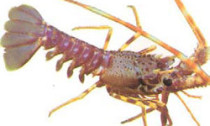
Echinometra and Echinothrix spp
Sea urchins are often used as indicator organisms in public aquariums to determine whether the system is functioning properly. These organisms are extremely sensitive to water conditions and are first to show signs of stress, seen when their spines are laid down or are shed.
Sea urchins (echinoderms) are a group of marine invertebrates that can be found in almost every major marine habitat from the poles to the equator and from the inter-tidal zone to depths of more than 5,000 metres. There are around 800 extant species and the group has a long and detailed fossil record stretching back many millions of years. All echinoderms have tubefeet and these play a very important role in feeding and respiration.
Echinoderms move by means of spines and climb a...
Read More







Social Profiles